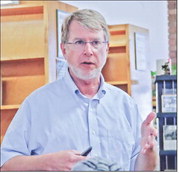Who are the Amish?
UW professor explains history of 500-year-old sect


The oldest Amish community in Wisconsin began in Medford in 1920, but families have since spread throughout the state.
“The Amish are quite familiar across the country, and have been since ...


